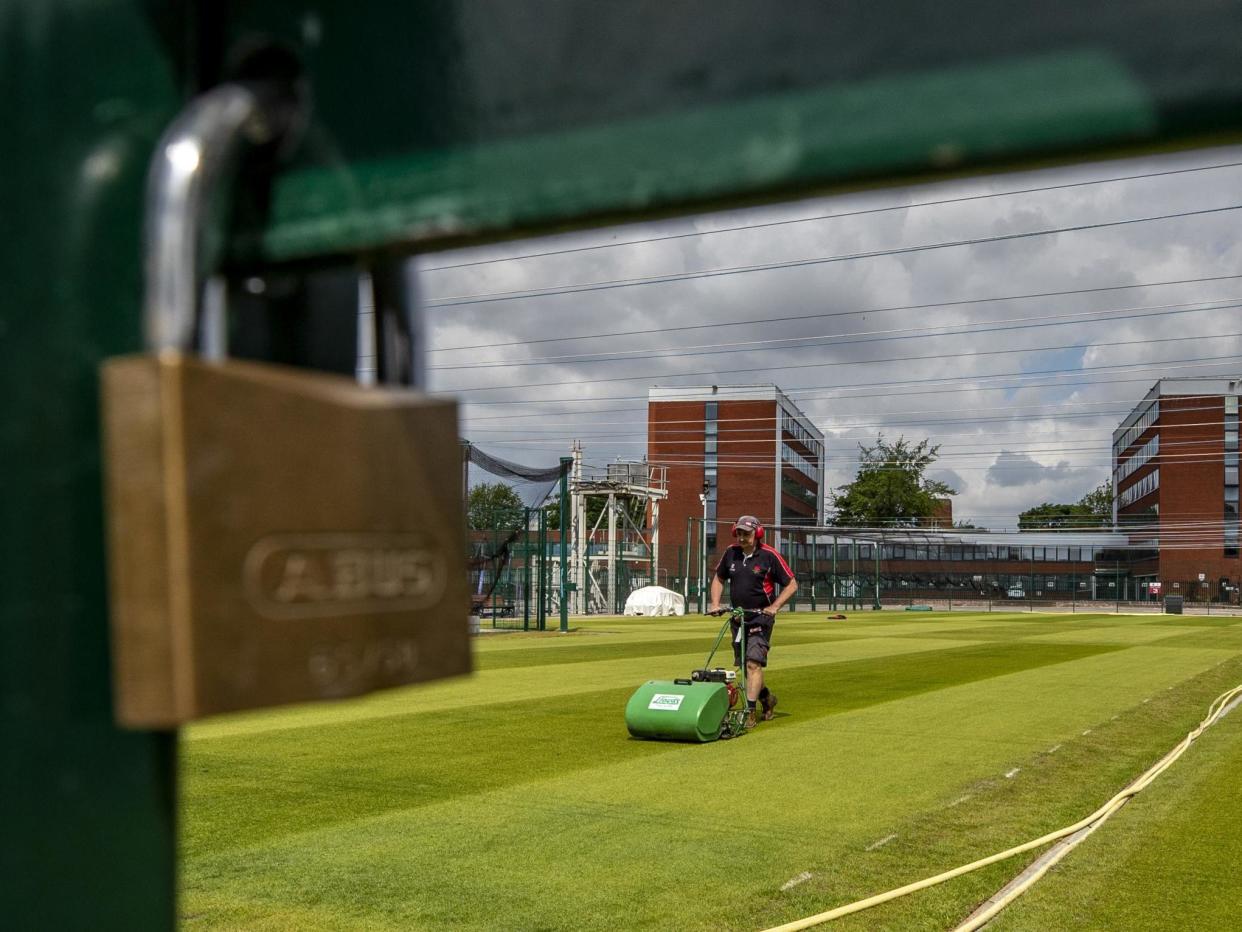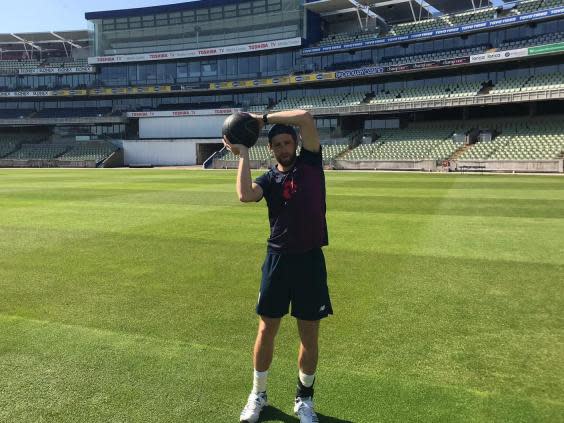Inside cricket’s bio-secure bubble as England prepare to take to the field like never before

With 55 cricketers back training as of 1 June, the England and Wales Cricket Board have begun fine-tuning what behind-closed-doors matches at bio-secure venues will look like.
But as director of events Steve Elworthy outlined measures that are due to be ratified in the coming week, there was only one absolute. Without government clearances to allow West Indies, Pakistan, Australia and even Ireland squads into the country, it could all be for nothing.
Discussions with those boards, and with the BCCI and Cricket South Africa for England Women’s fixtures against India and South Africa, are ongoing and positive.
“From a planning point of view we have got everything in place,” Elworthy said. “We’re ready for it, but clearly we don’t want to stray outside of government guidelines and government decision-making. We’re working very closely with them and hoping we are going to get some answers for them today.”
The ECB confirmed they will be operating on a three venue basis from July, with two to be used to stage matches and one as a training facility. Old Trafford (Manchester) and the Ageas Bowl (Southampton) are the two grounds due to host competitive fixtures, with the first Test against West Indies pencilled in for 8 July.
The West Indies, due to arrive first on 8 June, will have to undertake a two-week quarantine at the designated training ground. Here, they will also undergo testing before entering into the “bubble”. The same checks will be in place when players move from one venue to another. When Pakistan arrive during the England-West Indies series, they will move into the training ground for their two-week quarantine and training period.
The plans around obtaining bio-security are intricate, including perimeter control 1500 to 2000 square meters testing sites and green zones of where particular groups are able to be within the “inner core” of the venues (such as the onsite hotel or field of play). But as with other sports that are returning in this controlled manner, the biggest issue will be a positive test within these set-ups bringing down the whole house of cards.
Everyone who enters the bubble will have been tested and the ECB estimates, with both squads, that could mean as many as 250 people, with broadcast, media, operational and venue staff. All tests and PPE will be sourced privately.
Isolation rooms have been built into venue planning in case someone tests positive when inside the bubble. Should someone test positive, this is where they will go. If it is a player during a game, it is hoped teams will have the option of a “Covid-19 replacement”, subject to ICC ratification. In that instance, other players will be tested again, as well as those who may have engaged with the person.
As well as hotel restaurants, self-containment within these sites will also include schedule use of hotel gyms with staggered opening times to ensure people can get regular exercise to ensure physical and mental well-being while locked down for what Elworthy hopes is no longer than a month.
The ECB are also trying to divide what they are calling a “bridge to the outside”: allowing people to leave these secure environments for a few days at a time.

Players have voiced concerns about being away from home for long stretches, especially those with young children. England Test captain Joe Root is also expecting his second child in July. Many others, from broadcasters, operational and venue staff will have similar predicaments. Medical staff, including ECB chief medical officer Nick Pearce, are working on the practicalities of allowing a controlled flow of people in and out.
“There are going to be circumstances when people will need to leave,” said Elworthy. “I absolutely get that. We will make sure that the protocols around leaving the bubble and coming back into the bubble are for the shortest period of time but in the most safe and secure way possible.”
It will be no surprise to hear these measures, even the most detailed, are subject to change. That is simply the nature of a pandemic such as this.
But the ECB are hopeful of positive noises from above by the start of next week. Other than crossing their fingers, there is not much more they can do.
Read more
ECB delay domestic season but remain ‘hopeful’ of cricket this summer
England Women come face to face with new rivals Germany... on Zoom
Inside cricket’s return to training with England bowler Woakes

 Yahoo News
Yahoo News 
